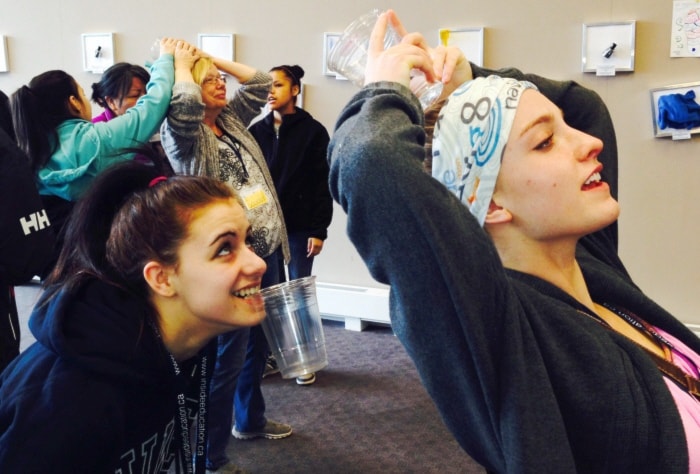While the term literacy usually connotes to reading and writing, a three-day water conference gave high school students a chance to network and learn about the state of water in Alberta and around the world.
Students at Ponoka Secondary Campus were invited to a conference called Navigate 2014: A Water Literacy Youth Summit in Banff recently. Water was the hot topic of the weekend.
Vice-principal Kathy McTaggart took to the summit four Grade 10 students who mingled with youths from 19 other schools and all were chosen by organizers.
Presentations such as Water and Natural Resource Development in Alberta and Water Issues and Innovations were part of the classes in the event-packed conference.
Students had the chance to build their own water filtration system using a few interesting items such as shredded walnut shells, coal, dirty water and a glass. They also made Tippy Taps, a simple instrument used to pour water from a jug without contaminating its ingredients. The conference turned out to be an eye-opening experience.
“It definitely made me aware,” said student Samara Rowland. “All the water systems are connected.”
She was inspired by researcher Kelcie-Miller Anderson, who came up with a system of filtering tailings ponds water — a by-product from oils sands mining — so it could safely be reintroduced into the environment.
One aspect of the conference that surprised Mary Wilkinson was the amount of water the oil industry uses compared to others.
Indeed, a 2009 study on water use in Alberta showed agricultural water allocations had the majority with 44 per cent; commercial use — including drilling, injection, oil and gas — was almost 14.5 per cent; cooling, which is used for thermal power generation and municipalities was 23.5 per cent.
“You can’t really choose between water or power, you need both,” said Wilkinson.
She suggests there are two sides to the coin with regards to water use and while industry allocations are large, that water provides a means to create power.
Lisa van der Westhuizen enjoyed networking with students from around Alberta and has created new friends out of the trip. One other point of interest to her was learning about how other communities around the world deal with water.
She suggests the best way people can learn is being hands-on. “Experience is one of the best ways to change.”
The team has adjusted a school biology project to fit the lessons they learned at the conference. Emily Lehr was the other student who attended the summit but was unavailable during press time.
McTaggart said the trip was paid for by Inside Education, which hosted the event.
